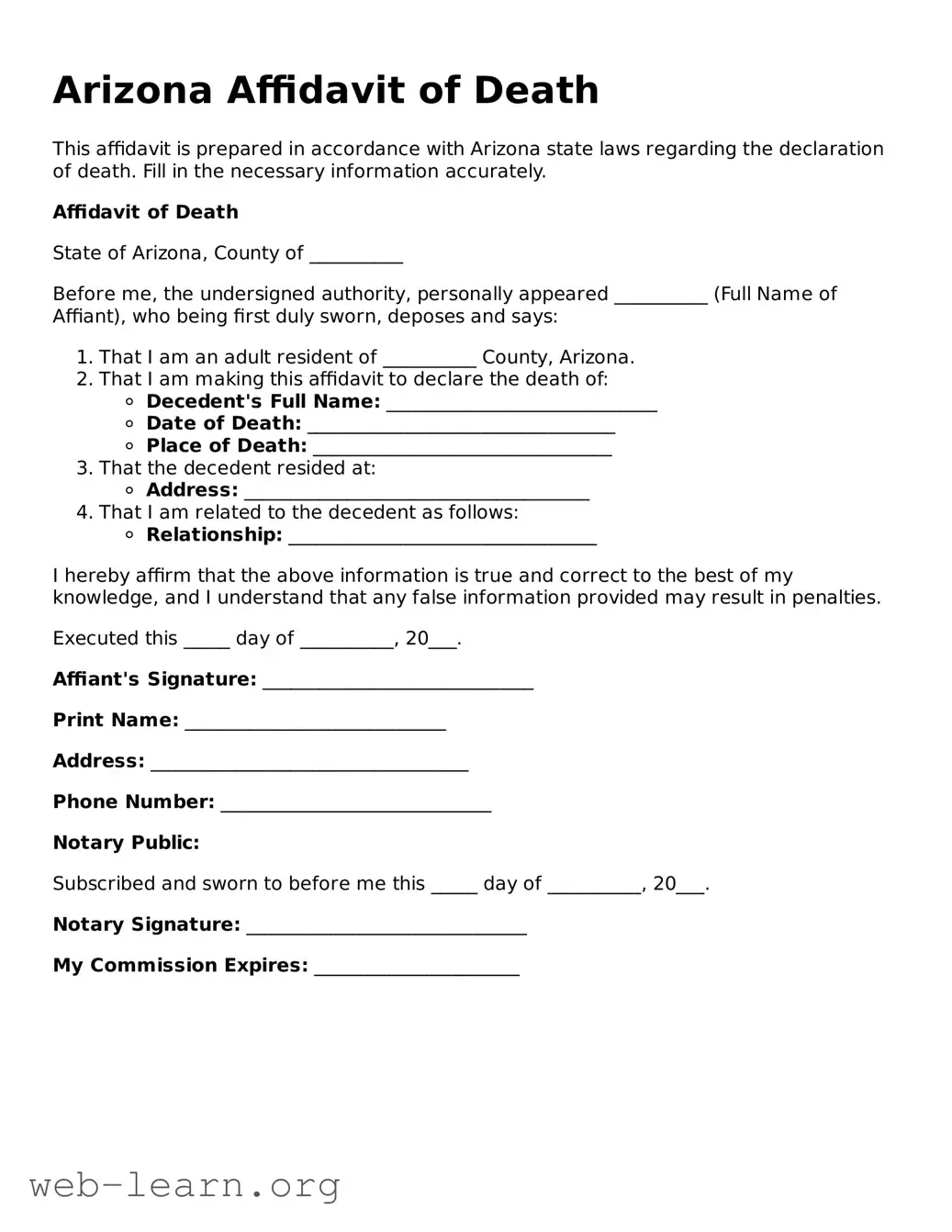Arizona Affidavit of Death
This affidavit is prepared in accordance with Arizona state laws regarding the declaration of death. Fill in the necessary information accurately.
Affidavit of Death
State of Arizona, County of __________
Before me, the undersigned authority, personally appeared __________ (Full Name of Affiant), who being first duly sworn, deposes and says:
- That I am an adult resident of __________ County, Arizona.
- That I am making this affidavit to declare the death of:
- Decedent's Full Name: _____________________________
- Date of Death: _________________________________
- Place of Death: ________________________________
- That the decedent resided at:
- Address: _____________________________________
- That I am related to the decedent as follows:
- Relationship: _________________________________
I hereby affirm that the above information is true and correct to the best of my knowledge, and I understand that any false information provided may result in penalties.
Executed this _____ day of __________, 20___.
Affiant's Signature: _____________________________
Print Name: ____________________________
Address: __________________________________
Phone Number: _____________________________
Notary Public:
Subscribed and sworn to before me this _____ day of __________, 20___.
Notary Signature: ______________________________
My Commission Expires: ______________________
